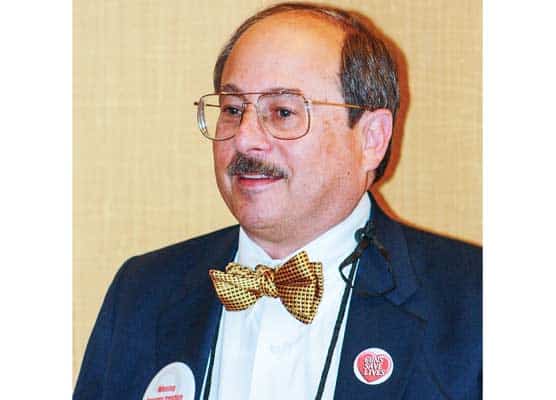Another Border Tale
Frangipani Paradise, Part I
As a boy I collected postcards, favoring those with vividly colorful tropical scenes—in stark contrast to the mostly monochromatic baked coral atolls of my youth. Later I came to appreciate the skills of the photographers, framing those scenes narrowly, because 15 degrees either side of the “paradise shot” spread mega-slum shanty towns and reeking, steaming dumps; like focusing on a flower suspended over a cesspool.
Several times I actually stood on the spots from which those photos were taken. To portray paradise there, even a slice of it, was a triumph of both the human spirit and photographic prowess. To believe in it was insane. But sometimes, just sometimes, that balance is reversed.
When the State Department’s crusty team leader learned I hadn’t been there before, he described the country as “Frangipani paradise; the whole place is like a florist display,” and their diplomats as “chuffers.” I got the former. He explained the latter:
“Their diplomats are mostly fat old guys in outgrown cutaway dinner jackets. They’ve all got big muttonchops and huge walrus moustaches, and when they chuff—blowing air from their pursed lips—their moustaches bristle and flutter. They may think it makes them look tough or determined or something.” The chuffers were his problem. I would be working with their national police on training and tactics.
The capital was drop-dead gorgeous—old but clean, treed and flowered, brick and stone and warm fragrant air. I saw very little of the city, spending my days and evenings in “generic militaria” compounds. On the last night in the capital though, I met my chuffer—and had a taste of frangipani fruitcake.
There was a formal dinner-and-drinks shindig and I had to get my papers signed by the Minister of Security for a 2-day visit to the frontier, the last outpost on the border. The Minister couldn’t have been stiffer if he’d been dipped in starch, and clearly, he wanted to impress me with the dangers of la frontera.
“You go at your own peril, young man! (Chuff!) Things are tense; quite (chuff!) TENSE there. Quite! Hostilities could commence at any moment!” (Chuff!) His whiskers fluttered, he snapped his white satin braces, signed my pass, consigned me to my possible doom with a nod and returned to the ballroom and bar, all in one practiced pirouetting motion.
The party went on—not my kinda thing. I wandered the palace. The artwork—the statuary, the paintings, the objets d’art from vases to candelabra on ornate 18th-century side tables—was eclectic—and amazing. But on one such table there was a dented, rusty oblong washtub containing a well-used washboard and old wooden tools for pounding and stirring dirty clothes. Above it, framed and lit in its own otherwise bare expanse of wall was a small, simply framed Degas of washerwomen at work. The Frangipani government could not afford all this art, but I had heard of one man who could.
A Slice of Frangipani Fruitcake
There was a light clicking of heels on the marble deck and there he was, a very short, very old man, immaculate in tie and tails; like a two-thirds scale model of Adolphe Menjou, right down to the petite waxed moustache. The sole heir of a rich landowning family, in his youth he had been a fierce, tiny soldier, who rode a giant white charger because, as he later explained to me, “I could not keep up with my men on foot. They took one stride to my four!” In battle he wore a shining white kepi with a flowing crimson neck kerchief, so both his enemies and his troops would know him on sight at a distance.
When he inherited, he multiplied that fortune many times over, and then, after surveying and cutting up his enormous properties, sold all of it to peasant farmers and herdsmen at ridiculously low rates over long, long terms. He moved into a splendid apartment in the capital and began buying art and donating it to the nation. He rocked on his heels; his little hands clasped behind his back, and gave me a twinkling smile.
“So you understand the Degas and display, yes?” I said I did and gave him my best shaved-ape grin. “Where you have washer-women well employed, it is a mark of a healthy society. I love them, even more than his dancers.” We walked. We spoke of Degas and Cezanne, Rodin and Renoir, Monet’s fixation on his water lilies. His tastes were thoughtful, piercing, and exquisite. We also discovered we shared two lesser-known favorites: John Singer Sargent and Maxfield Parrish. They lit his fuse.
“Ah!” he cried, “Masters of light and nuance! And,” he grabbed my sleeve, spinning me on the marble although I outweighed him by a 100 pounds, “They understood! You noticed; all their beauties have some small imperfections. As in real life, all great beauty is imperfect, and more beautiful for it!” Then he turned reflective.
“Art should inspire us, not with false fantasies, but with our struggles, our worst times, and the heights we can rise to; the nobility of our poorest, most mundane actions—and their importance; their inherent beauty.” He twinkled again. “Will you swear an oath of secrecy? I will show you my private art room!”
I didn’t know what to expect. Stolen treasures? Works from the looted Nazi art confiscations? “Lost” masterpieces? I had sworn secrecy, and that nagged at me now. The room had a vault door. Inside, in the center there was a raised dais with a swivel chair on top. With a flourish, he swept the door closed and hit the lights. Save for the museum lights, almost every inch of the walls was covered with cheap, garish velvet-paintings, some done with fluorescents, like DayGlo paints, the kind sold in Tijuana and Juarez for 5 to 25 bucks US; women with outlandish, unbelievable breasts; Elvis Presley in a dozen stage costumes; Pancho Villa, with and without his trademark clenched cigar and crossed bandoleers; the clichéd lonely Indian on his painted pony at dusk; the whole ball of cheap wax. Good thing it was a secret room. I was stunned.
As I sipped his fine cognac and he chattered animatedly about the boldness, the vigor and vitality of this “emerging art” I realized I was in the presence of a great and noble man—a hero, a national treasure himself—with small imperfections that made his beauty real.
On to La Frontera!
Rough ride! Oh, yeah… I had a uniformed national police driver, and my “field transport” was an old but mint-condition jet-black Cadillac with sparkling chrome and broad white-striped “gangster-wall” tires. Mounted in the rear portside window was a whirring, humming tubular air-conditioning unit. That didn’t bother my fellow passenger in the wide back seat, a suited, bookish young guy who spent his trip halfway to the border reading numbers from one ledger and making cryptic notes on another ledger balanced on his knees. I commented to the driver about the luxury of my ride considering the “tense situation” on the border. He laughed and tried to stifle it with his gloved hand. “What’s this?” I thought.
“Oh, yes sir,” he chuckled. “We have a very nice tension on the border.” Then, “We must go. El Commandante…” He seemed about to pronounce a surname, but stopped himself. “El Commandante, he is very anxious to see you.” This time his smile had a secretive little smirk to it.
Sorry, folks… this ends Part I. The story couldn’t be told properly in one shot. My apologies too for having to be cagey about dates, names and places. I spent two years, plenty wampum and countless dull, dragging hours with two lawyers figuring out how I could tell some stories without violating a knee-high stack of NDA’s—Non-Disclosure Agreements—and classified-documents oaths. I know it’s fashionable to violate them at will, but I’m serious about oaths, pledges of honor and pinky-swears to small children.
Connor OUT



